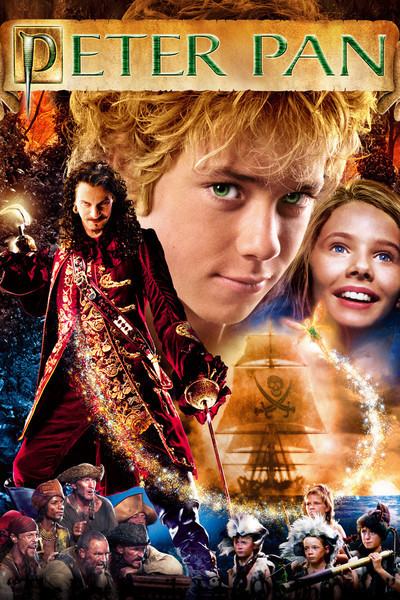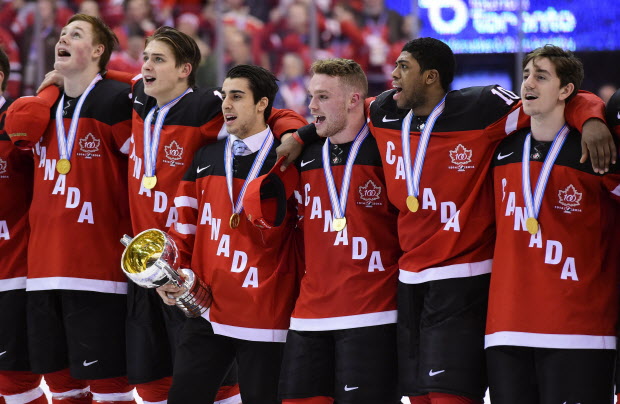There are a growing number of pessimists in the world who will tell you that there are “no more original ideas,” and that everything that is being created today has been done before. And while I do not at all subscribe to this faithlessness in human imagination, it does seem to me that more and more creative endeavours, be they books or films or television shows or plays, are “inspired by true events” or “based on the work” of such and such a person. “Inspired by” and “based on” can be used to cover all manner of alteration, from faithful recreation, to thinly veiled plagiarism, to satirical send-up, to shameful butchering of original ideas, and everything in between. They are blanket statements which seem to declare carte blanche for the adapter; as long as they acknowledge that their contribution is influenced by something else, they may feed their audience whatever they please. This, I believe, is dangerous ground. “Inspired by” and “based on” create a grey area in artistic expression, which can be easily manipulated to defend a multitude of grave offenses. There is a fine line between the creative license to alter and change a work to present it in a new way, and the complete obliteration of the original material. Be wary, dear reader, of “inspired by” and “based on.” Here there be monsters.
To demonstrate my point, I have ranked seven different creative works “inspired by” or “based on” the life and writings of J.M. Barrie, judged by how much they try to get away with under the protection of the two magic phrases. Let’s start with…

7. Peter Pan, Universal Studios’ 2003 film
Relation to the source material: Film adaptation of the novel Peter Pan and Wendy
Overall grade as an adaptation: Excellent
What it gets away with: Universal’s film is by far the closest to the original play and novel of Peter Pan, using large portions of the source material as narration for the film. It changes small details, adds a character or two to flesh out side stories, but ultimately sticks not only to the plot of Barrie’s original work, but also its essence and spirit. The only major faux-pas the film commits is having Wendy kiss Peter at the end – it is expressly stated time and again in the novel and the play that Peter must never be touched. Oh, and “I do believe in fairies, I do, I do,” while it gives me goosebumps, is a departure from the traditional cure for Tinker Bell’s near-death – children clapping.

6. Hook, TriStar’s 1991 film
Relation to the source material: Sequel to the story of Peter Pan and Wendy, telling of a grown-up Peter.
Overall grade as an adaptation: Very good
What it gets away with: Though the events of Hook are based almost entirely on its writers’ own imagination, the film is actually extraordinarily loyal to Mr. Barrie’s original work – perhaps even more true to the original than Universal’s film. However, being a sequel, jumps had to be made – some of which, including the notorious Tinker-Bell-is-suddenly-huge scene, are not quite in the spirit of the original stories. But nearly everything else in Hook is truly “based on” Barrie’s masterpiece, from characters’ motivations to origin stories to recalled adventures to names and places. As far as sequels go, Hook is tops.

5. Finding Neverland, Miramax’s 2004 film
Relation to the source material: Biopic of James Matthew Barrie, creator of Peter Pan, and particularly his relationship with the Llewelyn Davies family, who inspired his work.
Overall grade as an adaptation: Good enough
What it gets away with: Biopics are notoriously bad embellishers and exaggerators under the guise of “based on actual events,” and the same can be said of Finding Neverland. The least offensive of all its altered histories is the casting of Johnny Depp as Barrie, who in real life would not have made People‘s Sexiest Man Alive list, and who sported a prolific moustache all of his adult life. The film takes other, more egregious liberties as well: the complete omission of the youngest of the Davies brothers, Nicholas; the omission, too, of Sylvia’s husband, who was alive for most of Barrie’s time with the family; and most unforgivably of all, the presentation of Barrie as a healthy, generally well-adjusted man. In reality, Barrie suffered from psychogenic dwarfism – a growth disorder brought on by extreme trauma or distress. Barrie lost his older brother when he was very young, and the tragedy hit his mother and the young James so hard that he literally stopped himself from growing up. So much of the beautiful tragedy inherent in Peter Pan comes from Barrie’s psychological issues, as well as his own deceased brother’s role as “the boy who would never grow up,” all of which was inexcusably omitted from the film. As a result, what you end up with is a half-true but still passable glimpse into the creator of the mythology.

4. Walt Disney’s Peter Pan, Disney’s 1953 film
Relation to the source material: Children’s animated adaptation
Overall grade as an adaptation: Fair
What it gets away with: Disney’s animated classic is many people’s first exposure to Peter Pan, and likely the iteration with which they are the most familiar. The film’s opening credits label it an adaptation of the play (which came before the novel, making it the first complete work on the subject of Peter Pan) – calling it an adaptation is one and the same as saying “based on.” All the pieces are present in this one – Peter and the Darling children, Captain Hook, Smee, Tiger Lily and the rest – and so, too, is much of the story of the boy who would not grow up. A few large changes have been made – instead of poisoning Peter’s medicine, an iconic moment in the original story, Hook attempts to blow Peter up with a bomb – hardly the delicacy a man of Hook’s grace would employ. Gone entirely is clapping to save Tink, another essential moment of the play from which the film is derived. Disney also portrayed the natives in the film – Tiger Lily and her tribe – as farcical (and rather racist) comic relief, instead of the invaluable warrior allies they are in the play. What is missing, ultimately, is the spirit of Barrie’s story. Peter is presented as a loveable scamp, if a little moody. The real Peter, if I may call him that, is much more of a tragic hero, beautifully flawed and much more complex. In short, he has been Disney-fied.

3. Finding Neverland, Broadway Musical
Relation to the source material: Musical adaptation of the 2004 film, based on the life of J.M. Barrie and the writing of Peter Pan.
Overall grade as an adaptation: Poor
What it gets away with: All the problems of the Johnny Depp film exist in this fluffy, overwrought musical retelling of Barrie’s relationship with the Llewelyn Davies family, with a bunch of extra nonsense thrown in for good measure. The studly, masculine Barrie (presently being played by Glee‘s Matthew Morrison) is even farther from the historical man than Depp’s more delicate portrayal. The crux of the musical’s many faults in the name of “inspired by” can be seen in the finale to Act 1, when Captain Hook makes himself manifest in Barrie’s imagination, causing Barrie to sing an angsty song about finding the inner strength to face his critics and overcome… DUM DUM DUM… writer’s block. All while tearing open his starched white shirt to reveal his sexy man chest.

2. Pan, Warner Bros’ 2015 film
Relation to the source material: Prequel/Origin story
Overall grade as an adaptation: Yet to be seen, but by all evidence awful
What it gets away with: Judging by the trailer and press releases for the soon-to-be-released Pan, it is set to be the worst film “based on” the story of Peter Pan to date. A back story has been concocted for Peter and the Lost Boys and Captain Hook and Neverland and the rest – a back story that seems to draw heavily from the worst offender, see below – in this all-new reimagining of Barrie’s world. There is just one teeny tiny problem, though: Peter Pan already has a back story. It is well documented in the play and the novel and the original work in which Peter appears, an earlier novel by Barrie called The Little White Bird. Pan, however, chooses to ignore all these completely. An already-adolescent Peter, it would seem, is kidnapped from his dormitory in an orphanage and made prisoner by pirates in a flying sky-ship. Yep. In this, it can be seen that the film has lost sight of the central thesis of Peter Pan, which is this: Peter, for fear of growing up, CHOOSES Neverland. He is not an orphan. He runs away in fear of his own mortality. He secludes himself from love and relationships and other things that are inherently a part of growing up, choosing instead to be carefree and joyful. In making Peter an Oliver Twist-esque orphan snatched from his bed, he is no longer the tragic hero who must choose between the youth and irresponsibility that defines his life and the love he cannot afford to feel; he becomes instead a passive captive, playing no part in the creation of his mythos. I could go on, but I run the risk of ranting. The point is this: to so thoroughly ignore the core ideals of the source material is irresponsible filmmaking.

1. Peter and the Starcatchers, book by Dave Barry and Ridley Pearson
Relation to the source material: Prequel/Origin story
Overall grade as an adaptation: Authors should be made to walk the plank. Or something more drawn-out and painful.
What it gets away with: Peter and the Starcatchers attempts many of the same atrocities as Pan, with the same creation of ridiculously unfounded back stories completely ignorant of the source material, but it strays even farther from Barrie’s ideals than the film would appear to. Fairy dust is relabeled “starstuff.” Instead of fearing whatever else females might have to offer besides motherhood, Peter has pubescent sexual attractions to girls. Once again, Peter is an orphan kidnapped by pirates. A pirate laughably named Black Stache is later transformed into Captain Hook when Peter cuts off his hand. And it is not even the same hand as the original story. Fairies are birds who fell into “starstuff,” in spite of a very specific and iconic mythology introduced by Barrie. And again, Peter’s choice and free will, so essential to who he is as a tragic hero, are completely removed from the equation. In this version, Peter will never grow up because he swims in water polluted with “starstuff.” So he is a mutant. Or something. Barry and Pearson have gone far beyond the realm of artistic license and tweaking for the sake of retelling, and have committed that most cardinal of sins: IGNORANCE OF THE AUTHOR’S ORIGINAL WORK.














